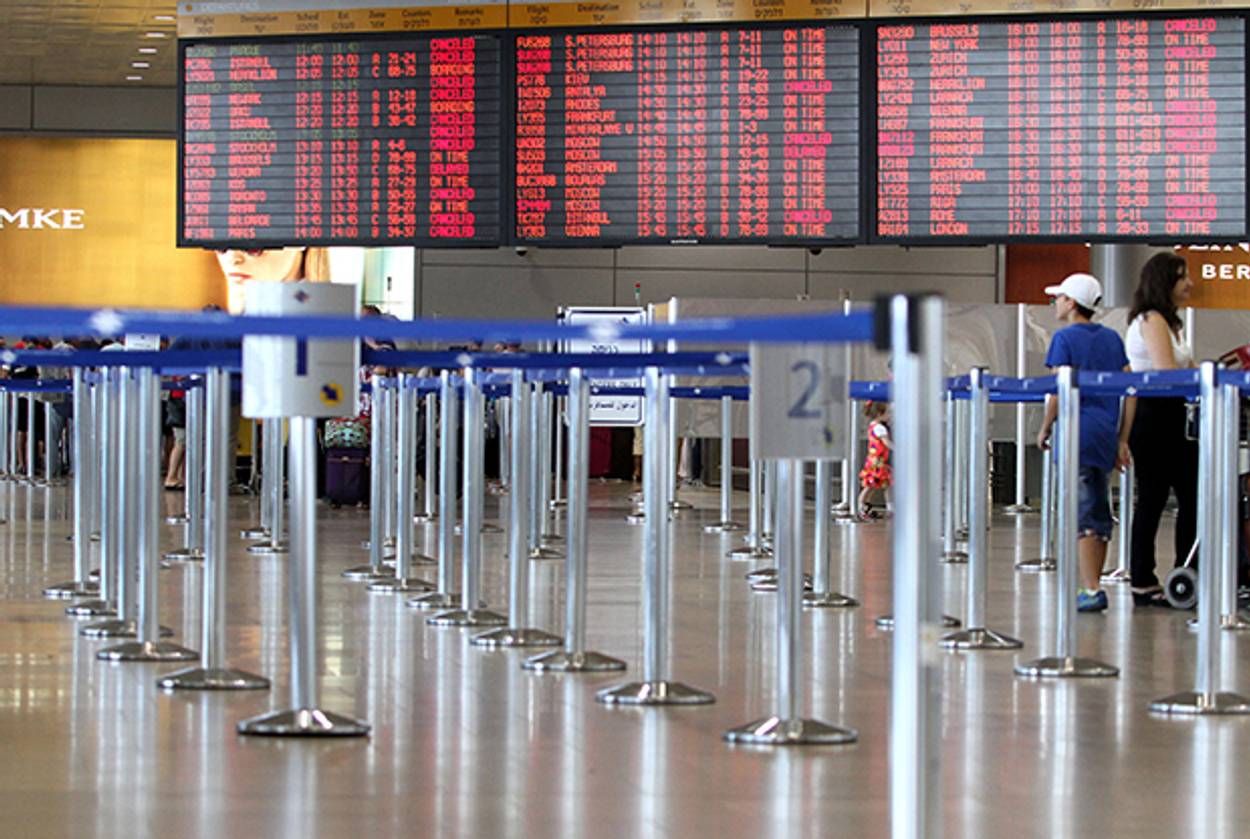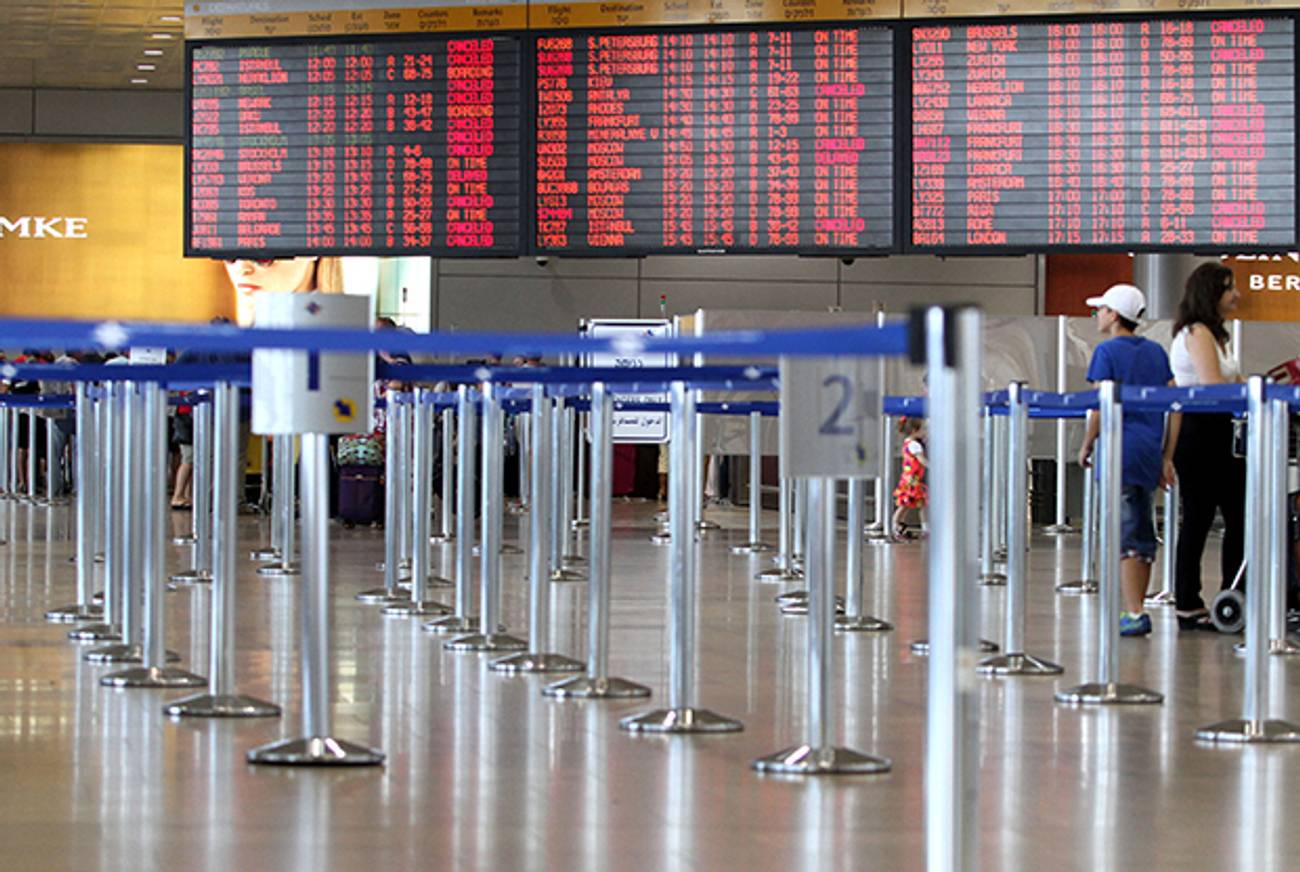The Politics Behind the FAA’s Israel Flight Ban
Is the White House using the agency to push its own agenda?




On Tuesday, the Federal Aviation Administration issued a notice prohibiting U.S. carriers from flying to or from Israel’s Ben Gurion International Airport after a rocket launched by Hamas from Gaza landed near the Tel Aviv airport. The FAA notice cited “the potentially hazardous situation created by the armed conflict in Israel and Gaza,” as the rocket landed a mile away from the airport.
The FAA’s notice followed a State Department travel warning on Monday. Some have questioned the timing and purpose of both the warning and the subsequent FAA prohibition, which came as Secretary of State John Kerry was traveling to the region to broker a ceasefire between Israel and Hamas. Kerry discussed the ban over the phone with Israeli Prime Minister Benjamin Netanyahu. But the State Department denied that there were any ulterior motives behind the FAA’s notice. “The FAA’s notice was issued to protect American citizens and American carriers. The only consideration in issuing the notice was the safety and security of our citizens,” State Department spokeswoman Jen Psaki said in a statement Tuesday.
To be sure, the State Department’s explanation is not entirely indefensible, in light of the recent downing of Malaysia Airlines Flight MH17 over Ukraine. In other words, it could be that an over-cautious FAA decided to be better safe than sorry, as it evaluates the situation. At the same time, however, given the timing and context of the State Department warning and the FAA notice, it is not unreasonable to suspect that the White House is using the ban as a pressure tactic against Israel.
Prior to the travel warning and the FAA notice, President Obama made his position clear that he would like to see an “immediate cessation of hostilities,” and that he was sending to the region Kerry to achieve that goal. The administration’s apprehensions about the Israeli operations were aired, supposedly unintentionally, on TV when Kerry was caught on a hot mic seemingly criticizing the Israeli operation to an aide as “a hell of a pinpoint operation.” Kerry, who was about to head to Cairo, added, “we’ve got to get over there”—that is, to get Israel to halt its operation. Obama also expressed his conviction that “Israel has already done significant damage to Hamas’s terrorist infrastructure,” and therefore it should now stop.
Against that background, it is easier to see how the FAA decision could be seen as a perfect tool for the administration to pressure Israel while affording the White House deniability. What’s more, this step offers Hamas a dangerous freebie, as recognized by former New York City Mayor Michael Bloomberg. Bloomberg noted Tuesday that the flight restrictions were a mistake “that hands Hamas an undeserved victory.” Indeed, unsurprisingly, Hamas declared it as such.
But more importantly, the flight restrictions send a dangerous message to Hamas, and beyond it to Iran, regarding the White House’s posture toward Israel, which Hamas could leverage to its advantage. There is precedent here for the Iranian axis to draw on. In December of last year, a Lebanese Army soldier shot and killed an Israeli soldier across the border near Rosh Hanikra, almost provoking a major conflagration. At the time, the Lebanese government rushed to implore the U.S. ambassador to Lebanon to make sure that Israel doesn’t launch a retaliatory operation, and to convince the Israelis that the soldier had gone rogue and acted alone.
It was never ascertained whether that was the case, or whether the soldier, operating in an area where Hezbollah has final say, acted as a cut out for the Shiite terror group. If it was the latter, then Hezbollah was banking on precisely the Americans leaning on the Israelis to make sure they don’t respond harshly. In fact, a report in a leading Lebanese newspaper at the time lent credence to the argument that this was indeed Hezbollah’s calculus. Official Lebanese sources quoted in the paper relayed their conviction that “any major Israeli confrontation with Hezbollah would require prior U.S. approval, which is something President Barack Obama will not allow.” Put differently, the thinking of Hezbollah and its allies was that the White House could be used to reign in Israel. And they were not wrong in their assessment. Now, Hamas may conclude the same thing.
Of course, it’s possible that the decision was simply taken by an overly cautious FAA. But it’s also not unreasonable to suspect White House involvement, especially when the decision is placed in the context of cumulative administration statements. Hamas and its Iranian patrons are more likely to have read it as U.S. pressure on Israel, and they will draw their own conclusions.
Tony Badran is a research fellow at the Foundation for Defense of Democracies. He tweets @AcrossTheBay.
Tony Badran is Tablet’s news editor and Levant analyst.